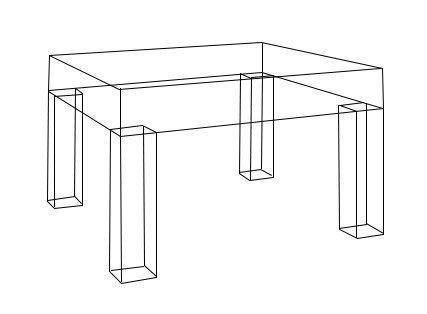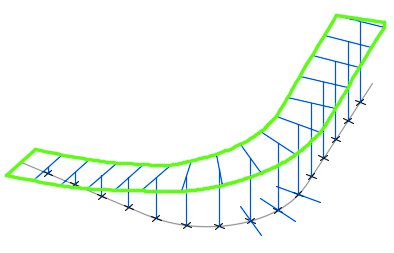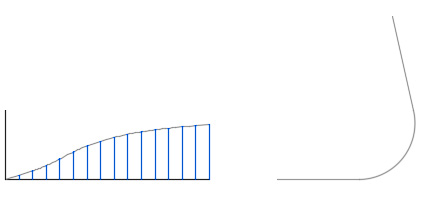3D wireframe model is the most basic version of any 3D graphics. They serve as the first blueprint or, to put it another way, as an abstract, skeletal depiction of a real-world thing. It is composed geometrically of points, curves, arcs, lines, circles, and other shapes. Together, these components give structure to a finished work that is richly detailed.

Typically, 3D wireframes are made by defining each edge of a physical item at the point where two smooth, mathematically continuous surfaces converge. When producing 3D models, the designers use this process before developing the actual model.
3D wireframe modeling is a cumber some process given its importance and the complexities the process demands. However, on the other side, wireframe modeling is an ideal way of demonstrating a product or a concept and presenting a basic model understandable by all, even by a non-technical lay person.
The major advantages and benefits 3D wireframe models offer are following:
- Develop a simple 3D design for the purpose of a basic idea of the concept, and further iterations.
- To be able to view the preliminary model from every possible angle for better understanding.
- Enhance auxiliary and orthographic projections with automation.
- Create Perspective views.
- Analyze spatial relationships, like distances between edges and corners.
- Drive a geometrical reference to create 3D solid, surface and mesh modeling.
Well, it goes without saying that 3D wireframes provide a lot of practical usefulness for any 3D designer. This is one of the reasons why 3D wireframe creation has garnered so much or popularity and usages.
Now when we talk about 3D modeling designs, quite naturally its 2D counterpart comes to our mind. There are some fundamental differences between these two genres that also decide their individual limitations and strength.
Generally, a 2D wireframe model is created by 2-dimensional flat curves and lines and has item boundaries. These are mainly used for blueprints, architectural drawings, designing plans, etc. They represent general layout of a site and determine their individual positioning. However, unlike 3D renderings, the objects’ depth cannot be indicated via 2D wireframes.
Why is 3D Wireframe Modeling Vital for Product Engineering?
So where do exactly 3D wireframe models take the cake? Obviously considering the nuance and depth they provide for each object, the orthographic views and perspectives they showcase – these are the factors what make this new-age process so robust and full-proof.
Most importantly, 3D modeling for engineering services has proven so convenient and functional, that most product engineers now rely on it. From concept drawings to an innovative digital prototype, this technology of mechanical 3D modeling has given design engineers a new kind of creative freedom.
While all these sounds very interesting and actionable, it is easier said than done. Creating 3D wireframe models definitely requires professional expertise and experience. The more the 3D modeler is skilled, the higher will be the accuracy of the 3D objects. The equation is simple.
Useful Read: 7 Types of 3D Modeling Techniques
3D Wireframe Creation Methods for Beginners
Let’s delve deep into a few methods for the beginners out there. (There’s a lot of work that go into the process, below points will just touch the tip of the iceberg)
- The 3D coordinates that specify the X, Y, and Z locations of an object’s defining points must first be entered by a 3D artist.
- Then, to build planar objects like arcs or circles, set the default work plane, which is the XY plane of the UCS (User Coordinate System).
- Finally, after the object has been completed, move, copy, or rotate it to its 3D destination.
To give you a better visual understanding as to how 3D wireframes look like, we have jotted down a few samples. Check them out and you shall get your answers.



Wrapping Up!
All said and done, there’s no better time to switch to 3D from 2D modeling than now. Innovation is the key in today’s dynamic marketplace; if you have any new product to showcase think of reaching out to a team of pros who can breathe life into your creative idea. There is also a plethora of DIY 3D modeling software available online. But as you know, few things are better left to be done by professionals since they deal with a lot of requirements for 3D modeling services.
Unleash your creative freedom and take a plunge into the world of 3D wireframe modeling, 3D shapes and artworks. We shall roll out with a new, engaging Blog post on 3D designs and technology, so stay tuned!
